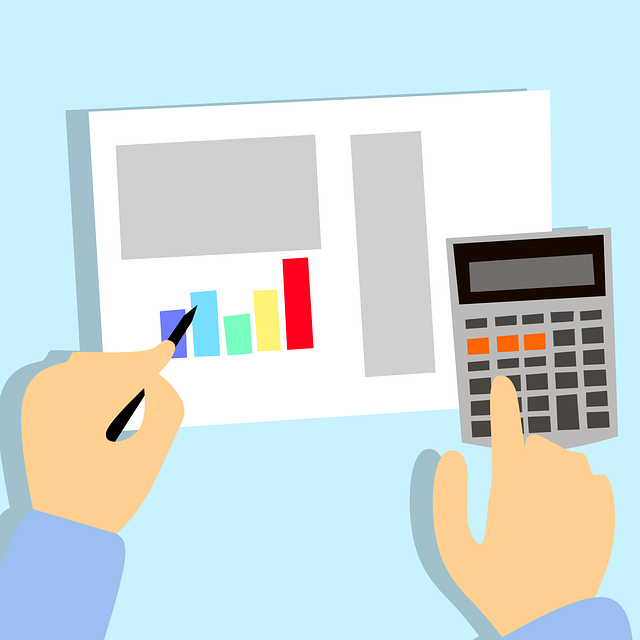
A Social Security calculator will help you determine how much you will receive in retirement. To calculate your benefit for singles and married couples or divorced individuals, you can use one. These calculators consider your income, your spouse's income and any other sources of retirement savings. These calculators cannot replace a personal advisor but they can help determine how much you could expect to get when you retire.
Guide to calculating your Social Security disability benefit
It is important to understand the principles and workings of Social Security benefits if you are planning on retiring within the next few years. Your earnings history determines how much benefit you get. Your benefit will increase with your earnings. In order to adjust your benefits for inflation, the SSA uses a factor called an indexing factor. While this formula increases your benefit with inflation, it is only used for earnings up to the age of 59. After that point, your earnings will be calculated at face price.
Social Security Administration begins with your 35 highest-earning years. This is your average monthly income. This is followed by an indexing of these earnings for inflation. Therefore, earnings from the 1960s could look low in comparison to current earnings. The result of the formula is the primary insurance amount, which is usually the full retirement age benefit amount.
Basics of calculating a benefit
Social security benefits are calculated on the basis of your lifetime earnings and changes in your average wages since you first applied for them. The basic benefit (also known as primary insurance amount) is the amount that you would receive once you retire fully. This is the average indexed monthly income for 35 years of highest earnings.

Additional, if your FRA is less than 62, your benefits will be reduced. Your benefits for the first 36 month will be reduced 20 percent and then reduced by 10% for 24 months. This reduction will result in a decrease of 30% on your total benefits.
Estimates for singles, married couples, and divorced individuals
Social security benefits are calculated using a sliding scale that is based on the Consumer Price Index. This means that your benefits will increase by 1.5 times if you add a spouse. You may not receive the same benefits if both spouses work. To help you figure out how much you can anticipate receiving in retirement, you can use the Social Security Calculator.
Social security benefits can only be claimed if you have been married for at least 10 consecutive years. You might be eligible for spousal benefit if your marriage lasted for less than ten. However, you cannot combine both benefits. Your financial advisor and SSA can help you decide if you want to receive spousal payments.
Adjustments for rising economic prices
Increasing prices in the economy have a great effect on the amount of Social Security benefits available to retired people. Recently, the government announced a 8.7 percent cost-of living adjustment for beneficiaries' benefit. It will take effect in January 2023 and is the biggest increase in over forty years. The latest inflation figures from the government are used to calculate the adjustment. The September consumer price inflation showed an 8.2 percent rise. This increase is the fourth largest ever recorded and the largest since 1981.
Social Security has been increasing payments to its recipients over the past 40 years in an effort to keep up the rising cost of living. Since the program started, recipients have witnessed their payments increase each year on average. Inflation has historically been low and the increases have been modest. But last year's huge increase and this year’s are much larger.

Optional early retirement
Social Security offers several options for people who want to be able to save their money and get help when they retire. Your highest 35 years of earnings determines the amount you receive and it increases each month after your full retirement age. A penalty may apply if you are unable to collect benefits by the due date. Your benefits may be reduced by 30% if you begin receiving benefits before the FRA.
You can delay benefits for several decades. This strategy is great if you are married, and you want to maintain your lifestyle until benefits start. To estimate how much you'll receive, you can also use a Social Security Calculator. This calculator will tell you how much of your benefit is based upon various factors.
FAQ
How much do I have to pay for Retirement Planning
No. This is not a cost-free service. We offer free consultations to show you the possibilities and you can then decide if you want to continue our services.
What is risk-management in investment management?
Risk Management is the practice of managing risks by evaluating potential losses and taking appropriate actions to mitigate those losses. It involves identifying, measuring, monitoring, and controlling risks.
A key part of any investment strategy is risk mitigation. The purpose of risk management, is to minimize loss and maximize return.
These are the key components of risk management
-
Identifying the source of risk
-
Monitoring and measuring risk
-
How to manage the risk
-
How to manage the risk
Who can help with my retirement planning
Many people find retirement planning a daunting financial task. It's more than just saving for yourself. You also have to make sure that you have enough money in your retirement fund to support your family.
Remember that there are several ways to calculate the amount you should save depending on where you are at in life.
For example, if you're married, then you'll need to take into account any joint savings as well as provide for your own personal spending requirements. Singles may find it helpful to consider how much money you would like to spend each month on yourself and then use that figure to determine how much to save.
If you're currently working and want to start saving now, you could do this by setting up a regular monthly contribution into a pension scheme. It might be worth considering investing in shares, or other investments that provide long-term growth.
Talk to a financial advisor, wealth manager or wealth manager to learn more about these options.
How to Choose an Investment Advisor
The process of choosing an investment advisor is similar that selecting a financial planer. Two main considerations to consider are experience and fees.
This refers to the experience of the advisor over the years.
Fees are the cost of providing the service. These fees should be compared with the potential returns.
It's important to find an advisor who understands your situation and offers a package that suits you.
Statistics
- These rates generally reside somewhere around 1% of AUM annually, though rates usually drop as you invest more with the firm. (yahoo.com)
- According to a 2017 study, the average rate of return for real estate over a roughly 150-year period was around eight percent. (fortunebuilders.com)
- If you are working with a private firm owned by an advisor, any advisory fees (generally around 1%) would go to the advisor. (nerdwallet.com)
- A recent survey of financial advisors finds the median advisory fee (up to $1 million AUM) is just around 1%.1 (investopedia.com)
External Links
How To
How to Invest Your Savings to Make Money
You can get returns on your capital by investing in stock markets, mutual funds, bonds or real estate. This is called investment. It is important to realize that investing does no guarantee a profit. But it does increase the chance of making profits. There are various ways to invest your savings. There are many options for investing your savings, including buying stocks, mutual funds, Gold, Commodities, Real Estate, Bonds, Stocks, ETFs (Exchange Traded Funds), and bonds. These methods are discussed below:
Stock Market
Stock market investing is one of the most popular options for saving money. It allows you to purchase shares in companies that sell products and services similar to those you might otherwise buy. Also, buying stocks can provide diversification that helps to protect against financial losses. For example, if the price of oil drops dramatically, you can sell your shares in an energy company and buy shares in a company that makes something else.
Mutual Fund
A mutual funds is a fund that combines money from several individuals or institutions and invests in securities. They are professionally managed pools, which can be either equity, hybrid, or debt. The investment objectives of mutual funds are usually set by their board of Directors.
Gold
Gold has been known to preserve value over long periods and is considered a safe haven during economic uncertainty. Some countries use it as their currency. Gold prices have seen a significant rise in recent years due to investor demand for inflation protection. The supply-demand fundamentals affect the price of gold.
Real Estate
Real estate is land and buildings. Real estate is land and buildings that you own. You may rent out part of your house for additional income. You could use your home as collateral in a loan application. The home may also be used to obtain tax benefits. You must take into account the following factors when buying any type of real property: condition, age and size.
Commodity
Commodities can be described as raw materials such as metals, grains and agricultural products. These commodities are worth more than commodity-related investments. Investors who want capital to capitalize on this trend will need to be able to analyse charts and graphs, spot trends, and decide the best entry point for their portfolios.
Bonds
BONDS ARE LOANS between governments and corporations. A bond is a loan agreement where the principal will be repaid by one party in return for interest payments. Bond prices move up when interest rates go down and vice versa. An investor purchases a bond to earn income while the borrower pays back the principal.
Stocks
STOCKS INVOLVE SHARES OF OWNERSHIP IN A CORPORATION. Shares represent a small fraction of ownership in businesses. If you own 100 shares, you become a shareholder. You can vote on all matters affecting the business. When the company earns profit, you also get dividends. Dividends, which are cash distributions to shareholders, are cash dividends.
ETFs
An Exchange Traded Fund (ETF) is a security that tracks an index of stocks, bonds, currencies, commodities, or other asset classes. ETFs trade just like stocks on public stock exchanges, which is a departure from traditional mutual funds. For example, the iShares Core S&P 500 ETF (NYSEARCA: SPY) is designed to track the performance of the Standard & Poor's 500 Index. This means that if SPY is purchased, your portfolio will reflect the S&P 500 performance.
Venture Capital
Venture capital refers to private funding venture capitalists offer entrepreneurs to help start new businesses. Venture capitalists provide financing to startups with little or no revenue and a high risk of failure. They invest in early stage companies, such those just starting out, and are often very profitable.